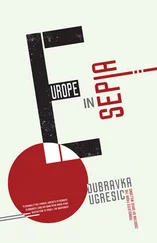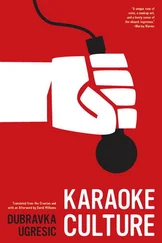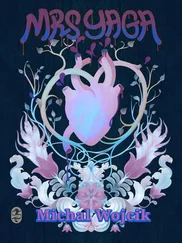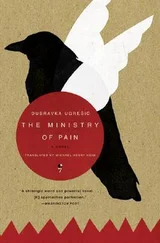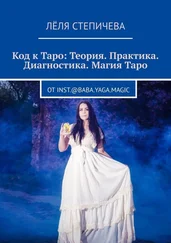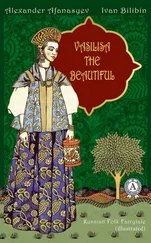Remarks
Women’s fingernails are seemingly the only strong connection with the great goddesses from the era of matriarchy that has lasted down to our own time. Women’s nails take various forms: there are fashions for trimming them, false nails with different shapes and lengths that can be glued onto the real ones underneath, then there are different coloured varnishes for nails and – most recently – a fashion for decorating fingernails with miniature designs. Men still feel that long, pampered nails have an erotic appeal. Only femmes with long, painted nails can be fatales . Long (usually scarlet) nails and shoes with ostentatiously high, tapering heels (which are nothing more than exaggerated substitutes for those dangerous toenails) belong to the stubbornly imperishable attributes of seductive women.
Mevludin experiences Pupa’s outstretched hand as a claw (and her raised hand as a hen’s wing). It is interesting that even in the swimming pool Pupa insists on covering her legs, so they dress her in knee-socks!
A long pointed nose is one of Baba Yaga’s most striking features. Her nose was once a bird’s beak which did not manage to turn itself into a regular nose. In other words, all the evidence suggests that Baba Yaga used to be a bird (the Great Goddess) before she turned herself into a humanoid of the female gender and a caricature of her former divinity.
Besides, the nose is a symbol of intelligence. Many tribes, in their ritual invocations of spirits, ancestors and other invisible forces, make use of dust mixed with ground-up, dried animal snouts. The peoples of Siberia – Yakuts, Tungus and others – preserve the snouts of foxes and reindeer, believing as they do that an animal’s spirit dwells in its snout, while the Chukchi utilise the snouts of wild animals as household spirits, guardians of their homes. The Lapps use the snout of the polar bear so that its perfect sense of smell will pass into them.
Psychoanalytically minded researchers will say that Baba Yaga’s nose is a phallic symbol, which fits with the thesis that she herself is a phallic mother.
Remarks
By assenting to plastic surgery on their noses – and rhinoplasty was the first massively popular cosmetic procedure – women consciously disown their (own) symbolic power and submit to a male concept of beauty. The folk saying ‘My nose – my pride’ expresses the judgement that someone’s nose is an inalienable part of their human identity, one that may not be changed, no matter what it is like. In other words, by disowning their noses, women disown their pride and power. If we adopt this point of view, the whole of women’s history can be read as the history of female self-castration, the deliberate disowning of power. This process of self-castration accelerated with the development of plastic surgery, of its ‘populist’ element, meaning the encouraging of women to kowtow to a particular (male) stereotype of beauty. In women’s history, which proceeds from ugly Baba Yaga towards the beautiful Virgin Mary (or ‘from Beast to Blonde’, as Marina Warner would put it), the Virgin has achieved total victory. Thanks to this victory, many women today look like the cheap plastic Virgins in village churches, or in other words like Paris Hilton!
The guys in Russian fairytales are mostly called Ivan: Prince Ivan, Ivan the Knight, Ivan the Peasant’s Son, Ivan the Soldier’s Son, Ivan the Robber, Ivan the Bean, Ivan the White Shirt ( Ivashka-belaja rubashka ) and so on. If the mother or father conceived the child with an animal, then the Ivans have a ‘bestial’ surname: Ivan the Bull’s Calf, Ivan the Cow’s Son ( Ivan Korovij’ syn ), Ivan the Mare’s Son (Ivan Kobylij’ syn ), Ivan the Bear ( Ivashko medvedko ) and suchlike. Ivan is usually the youngest of three brothers, and he is in a more difficult position than the other two. The parents punish Ivan, throwing him out of the house, or he gets punished for his own misdeeds. This initial affliction is the motor that drives the plot. Ivan has to solve the problem, defeating the foe and surmounting obstacles, if he is to be rewarded at the end with the throne and the beautiful princess’s hand in marriage.
The most popular Ivan of them all is Ivan the Fool ( Ivan-Durak, Ivanushka-Durachek ), a passive hero, a fool who whiles away the time stretched out on the stove ( Ivan Zapechnyj, Zapechnik ), catching flies and spitting at the ceiling. Ivan the Fool is nondescript and grubby, because he spends his days digging around in the ashes ( Ivan Popjalov ), and his nose is always runny. The two older brothers, busy with practical matters, ignore Ivan the Fool, they play jokes and tricks on him, they often beat him, they try to drown him in the river and so on. When their mother sends him to his older brothers with dumplings for their lunch, Ivan the Fool feeds the dumplings to his own shadow, thinking that it’s a living man. When they leave him tending the sheep, Ivan the Fool blinds them all so that they won’t run away. When they send him to town to buy things for the house, he puts the new table on the road to make its own way home, seeing as how it has four legs like a horse. When he sees scorched tree stumps along the roadside, he thinks they will freeze and he puts cauldrons over them to keep them warm. When the horse reaches the river and refuses to drink, Ivan the Fool pours a whole sack of salt into the water. When the horse still refuses to drink, he kills it.
Emelya the Simpleton is cut from the same cloth, except that he has a powerful helper: a pike-fish that has been given its freedom. It is enough simply to say ‘By the pike’s command…’ – and his wishes are granted straightaway. One day he has had enough of being stupid and ugly, and he orders the pike-fish to turn him into a very handsome young man who is gifted with great intelligence. He duly marries the king’s daughter. Ivan the Bear – human above the waist, bear below it – being tasked by his stepfather to guard the barn door, lifts the door off its hinges, carries it into the house and guards it, while thieves steal all the grain. To get rid of him, the stepfather sends him to the lake with the task of making a rope out of sand on the shore. He is hoping that fiends will catch Ivan and drag him down to the bottom of the lake. But Ivan uses his cunning to trick the fiends, and he returns home with a wagon full of gold.
* * *
Ivan the Fool’s most senseless and stupid actions turn out later to have been sensible and clever. For example, he accepts a bag of sand instead of money from a gentleman that he has worked for, but later he meets a beautiful girl who is trapped in a fire, and saves her by pouring his bag of sand over her. The girl is, of course, none other than the emperor’s daughter, and she becomes his wife.
In overcoming his obstacles, Ivan gets help from many quarters: animals (horses, pike-fish, birds, cats and dogs, bears, snakes, frogs, etc.), people, Baba Yaga, magical objects (a ring, a magic flute, etc.). Ivans are ‘chosen ones’ who, thanks to their own wrong choices, magical objects or unusual relatives (sisters that marry powerful bird-emperors), overcome all hardships and finally become heroes: they vanquish their foes, marry the emperor’s daughter, secure great wealth and eventually become emperors themselves.
In their Slavic Mythology , V. V. Ivanov and V. N. Toporov distinguish between two kinds of hero: Ivan the Fool and Ivan the Prince. While Ivan the Fool belongs to the ranks of ‘holy fools’ ( yurodivi ), who are deeply rooted in the Russian spiritual tradition, Ivan the Prince is a true mythic hero, for he passes the ultimate test, the most difficult of all: the encounter with death. By following the rules, Ivan the Prince finds the way out of the world of the dead and returns to life transformed, which we connect with the ancient mythical motifs of death and resurrection.
Читать дальше

